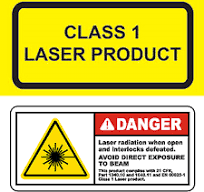The Power of Laser Products
Laser products have revolutionized industries and everyday life, offering precision, efficiency, and versatility like never before. From cutting-edge medical devices to high-speed communication systems, lasers play a crucial role in shaping the modern world.
Applications in Medicine
In the field of medicine, laser products have transformed surgical procedures, allowing for minimally invasive techniques with pinpoint accuracy. Laser therapy is used in various treatments, including eye surgeries, dermatology procedures, and even cancer treatment.
Industrial and Manufacturing Uses
Manufacturers rely on laser products for cutting, welding, marking, and engraving a wide range of materials. The precision and speed of lasers make them indispensable tools in industries such as automotive, aerospace, and electronics manufacturing.
Communication and Information Technology
Laser technology powers high-speed communication networks, enabling data transmission over long distances with minimal signal loss. Fiber optic cables use lasers to carry vast amounts of information quickly and reliably.
Entertainment and Display
Laser products are also used for entertainment purposes, creating dazzling light shows at concerts, events, and theme parks. Laser projectors can produce vibrant colors and intricate patterns that captivate audiences worldwide.
Future Innovations
As technology continues to advance, the potential applications of laser products are limitless. Researchers are exploring new ways to harness the power of lasers for quantum computing, 3D printing, environmental monitoring, and more.
In conclusion, laser products have become indispensable tools across various industries due to their precision, efficiency, and versatility. As we continue to unlock the full potential of laser technology, we can expect even more groundbreaking innovations that will shape the future of our world.
Understanding FDA Regulations and Basics of Laser Products: Top 5 FAQs
- What are the FDA requirements for laser labels?
- Is laser FDA approved?
- What does laser stand for in an acronym?
- What is the FDA classification of lasers?
- What is a laser product?
What are the FDA requirements for laser labels?
When it comes to laser products, understanding and complying with FDA requirements for laser labels is crucial. The FDA regulates the safety of laser products to protect consumers and workers from potential hazards associated with lasers. Laser labels must provide essential information such as the product’s classification, output power, wavelength, and safety precautions. Ensuring that laser labels are accurate and clearly visible helps to prevent accidents and promote safe usage of laser products in various settings, including medical facilities, manufacturing plants, and research laboratories. By adhering to FDA requirements for laser labels, manufacturers can demonstrate their commitment to product safety and regulatory compliance.
Is laser FDA approved?
The question of whether lasers are FDA approved is a common one among consumers seeking assurance of product safety and quality. In the United States, the Food and Drug Administration (FDA) regulates medical devices, including certain laser products, to ensure they meet established standards for efficacy and safety. Laser devices used for medical purposes, such as surgical procedures or cosmetic treatments, must undergo FDA approval or clearance processes to demonstrate their compliance with regulatory requirements. Consumers can look for FDA-approved or cleared laser products as a sign of adherence to rigorous standards set forth by the FDA to protect public health and safety.
What does laser stand for in an acronym?
The term “LASER” stands for “Light Amplification by Stimulated Emission of Radiation.” This acronym encapsulates the fundamental principles behind laser technology, where light is amplified and emitted in a coherent and focused beam through a process of stimulated emission. Lasers have become integral in various industries and applications due to their ability to produce intense, concentrated light with exceptional precision and efficiency.
What is the FDA classification of lasers?
The FDA classifies lasers into different classes based on their potential risks to users and the environment. Class 1 lasers are considered safe under normal operating conditions, while Class 2 lasers are low-power devices that pose a low risk of eye injury. Class 3 lasers are moderate-risk devices that can cause eye injuries if viewed directly, and Class 4 lasers are high-power devices that can cause severe eye and skin injuries. It is essential for manufacturers and users to understand the FDA classification of lasers to ensure proper safety measures are in place during operation and maintenance.
What is a laser product?
A laser product is a device that emits a focused beam of light through a process of optical amplification. This concentrated beam of light, known as a laser beam, is characterized by its coherence, directionality, and high intensity. Laser products are utilized in various applications across industries such as medicine, manufacturing, communication, and entertainment due to their ability to deliver precise and controlled energy. From laser pointers to cutting-edge medical lasers, these products play a crucial role in modern technology and have become integral tools in a wide range of fields.

No Responses